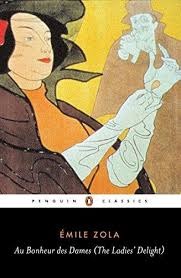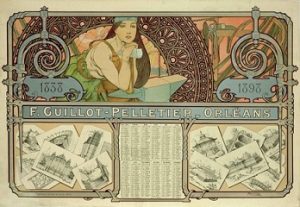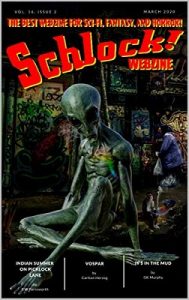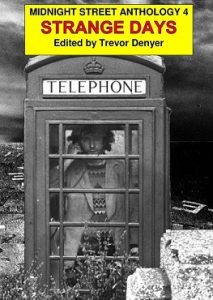
© Prana Film / Film Arts Guild
My previous blog post was about disgraced spin-doctor Dominic Cummings. This post is also about a bald, sinister and shadowy figure who doesn’t take well to being exposed to the light. I’m talking about Count Orlok, the central character of the classic 1922 German chiller Nosferatu: A Symphony of Horror.
F.W. Murnau’s Nosferatu was famously the cinema’s first (surviving) adaptation of Bram Stoker’s novel Dracula (1897), although the filmmakers sneakily tried to duck copyright responsibilities by changing the character-names and localities – retitling Dracula as Orlok, for instance. In the event, Stoker’s widow successfully sued them anyway. Nosferatu is one of those films I’ve seen so many clips of over the years that I’d assumed, wrongly, that I’d seen all of it. When I came across a remastered version of it on YouTube the other day, it occurred to me that I hadn’t seen it in its entirety. So I immediately made amends.
Nosferatu is an immensely atmospheric film and the technical aspects of it that have become dated in the century since its making just seem to add to its strange atmospherics today. For one thing, there’s the over-expressive silent movie acting. Gustav von Wangenheim as the estate agent Hutter, who corresponds to Jonathan Harker in Stoker’s novel, grins disconcertingly like a young Brian Blessed – although as the film progresses and he’s dispatched to Transylvania, ‘the land of thieves and phantoms’ as he calls it, to facilitate an unusual property deal, he predictably gets less to smile about. Meanwhile, Alexander Granach as Knock, who stands in for the novel’s lunatic and vampire-minion Milo Renfield, is unnervingly off the scale in his manic-ness.

© Prana Film / Film Arts Guild
Then there’s the special effects, which involve Keystone Cop-style speeded-up footage and crude stop-motion animation. Viewed today, they give the film’s events a discomfortingly bizarre quality. Whether it’s the beetling movement of the vampire’s black coach, drawn by black-draped horses, or a coffin lid shifting jerkily of its own volition, such things look like they’re happening in another, spectral world.
One supreme moment of oddness comes while Hutter is journeying through Transylvania and a ‘werewolf’ is glimpsed prowling through a forest. This is presumably meant to be Count Orlok in lupine form though it’s obviously a hyena the filmmakers must have procured from a circus or a zoo. A hyena loose in an Eastern European forest should seem ridiculous in 2020 but, like so much of Nosferatu, it just seems strange. (A werewolf, incidentally, featured in the original first chapter of Stoker’s Dracula, which was excised from the completed novel. In 1914, this missing chapter was published as a self-contained short story Dracula’s Guest.)
If Nosferatu has a glaring technical problem, it’s the preponderance of day-for-night shooting. This means that Orlok greets Hutter in the courtyard of his Transylvanian castle seemingly in broad daylight and thereafter he’s often seen stalking around in what is supposed to be darkness but is obviously sunlight (and even casting a shadow). The sun is commonly supposed to be fatal to vampires, but it doesn’t have to be – in Bram Stoker’s novel, it’s stated that sunlight merely weakens Dracula, depriving him of his supernatural powers but not destroying him. However, Nosferatu ends with Orlok disintegrating as he’s struck by an early-morning sunray, so the day-for-night shooting makes a nonsense of the vampire mythology that the film’s set up for itself. (The remastered version of Nosferatu I saw was very cleaned-up and I’d heard that in the original version the night-set scenes had been ‘tinted’ to make them look darker. But I’ve checked older uploads of Nosferatu on YouTube too and the day-night issue is still problematic.)
While I’m on the subject of illogicality, I should say I don’t understand the mindset of the crew of the schooner tasked with transporting some crates of soil, among which Orlok has concealed himself, to Wisborg, Hutter’s hometown in Germany. They already know that a mysterious ‘plague’ is ravaging the coastal area that they’re sailing from. And before they set off, they notice that the crates are swarming with rats as well as being full of soil. So why do they accept this potentially lethal cargo?
On the plus side, of course, Max Schreck’s performance as Count Orlok is still utterly memorable. Devoid of any of the gentlemanly or aristocratic suaveness that later actors like Bela Lugosi, Christopher Lee and Gary Oldman would bring to the role of Dracula, Schreck’s Orlok is a pure creature of the night – bald, pale, sporting rat-like incisors and pointed ears and wielding clawed hands that resemble clumps of albino carrots. He’s not entirely hairless, having some shockingly unruly tufts of ear and eyebrow hair. (There are no vampire brides in this version of the story. Orlok, like many a bachelor living alone, obviously neglects his facial grooming.)
When he’s wearing a crumpled hat and trying to act the welcoming host to Hutter, he’s ghoulish enough. When he appears in his full, thirsty, vampire-ish form, for example, on board the schooner, he’s the stuff of nightmares. Also interesting is how he’s much more supernaturally powerful than the average movie vampire – Knock and Ellen (Greta Schröder), who’s Hutter’s wife and the film’s equivalent of the book’s Mina Harker character, sense and react to his presence long before he even sets sail from Transylvania to join them.
Knock is particularly interesting as, unlike other Renfields and other minions of Dracula in other films, he never actually crosses paths with his master. In the plot, his function is really to serve as a scapegoat for the slayings that occur in Wisborg after Orlok arrives. The townspeople believe that Knock, who’s just escaped from the asylum he was incarcerated in, is the real vampire and a mob of them pursue him through the streets and the surrounding countryside. Indeed, you’d feel sorry for him if he hadn’t throttled an asylum attendant during his breakout. The chase provides Nosferatu with some of its most memorable images – Knock perched gargoyle-like on a vertiginous rooftop, for example, or the mob racing towards a figure they believe is him in the middle of a field, only to discover that it’s a scarecrow (which they tear to pieces in a rage).
To audiences in 1922, Nosferatu: A Symphony of Horror must have seemed sensational. Jaded, hardened film-watchers a century later won’t find it a symphony of horror, of course. But with its strange images and sequences, the film still has a way of getting unsettlingly under your skin. You’ll feel you’ve at least experienced a symphony of haunting Germanic weirdness.

© Prana Film / Film Arts Guild










